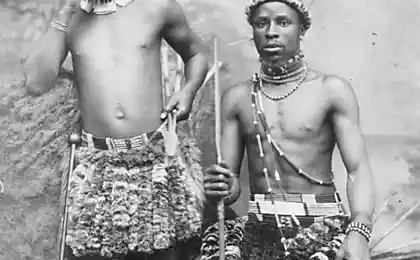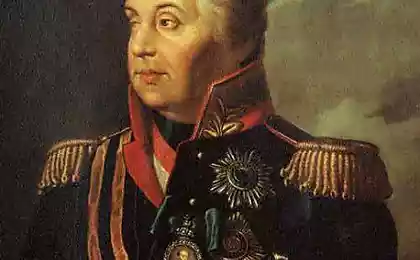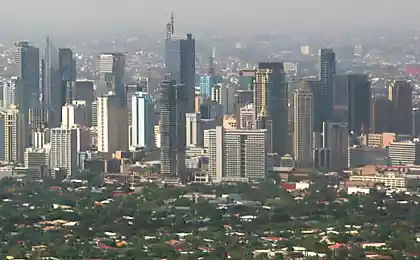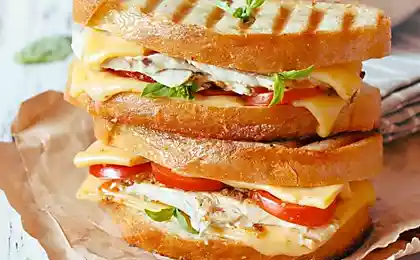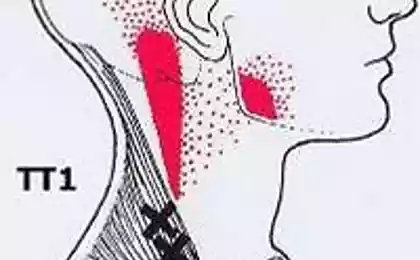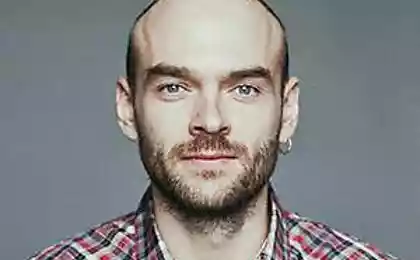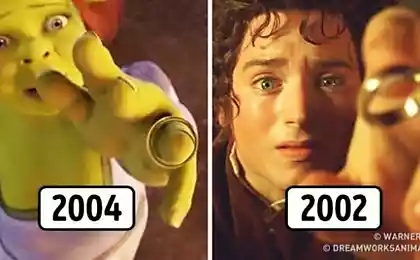1148
Hot Spots of the World (33 pics + text)
Since the bloody civil wars in Africa and ending the unrest in Southeast Asia, in the world today, there are 33 hot spots in which most affected the local population.
Nepal:
Despite the fact that the 2006 peace agreement put an end to the 10-year civil war between the Maoists and the central government of Nepal is trying to maintain a semblance of stability, although the two ruling parties are squabbling endlessly. The last outbreak of clashes seen in Kathmandu in May 2009. Then the leader of the Communist Party of Nepal (Maoist) Prachanda resigned after President Ram Baran like Yadav criticized the decision of the Prime Minister to dismiss General Rukmagada Katavala. Pictured Nepali student activist who supports the protest against the dismissal of the Nepali Congress Katavaly, May 3, 2009.

Eastern Congo:
The situation in Eastern Congo rather unstable since the national squads of Hutu militias (Interahamwe) declared war on the country's ethnic minorities - Tutsi. Since 1994, the confrontation resulted in the genocide. Since then, the region has become a haven for a large number of insurgents, the actions of which more than a million Congolese have been forced to flee the country, and several millions were killed. In 2003, the leader of the mutiny of Tutsi Laurent Nkunda continued to fight Hutu (Interahamwe) and created the "National Congress for the Defence of the People." In January 2009, Nkunda was captured by Rwandan troops. But even despite the loss of their leader, some Tutsi rebel group still commit violence. The picture shows the members of the family carry the body of their relatives for burial. The camp for rebels in Goma on 19 January 2009.
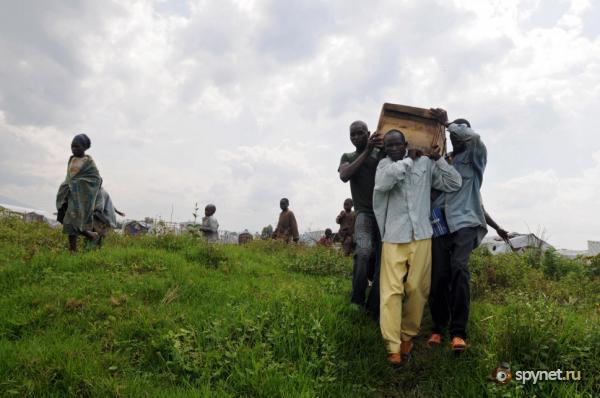
Kashmir:
Conflict continues in Kashmir since 1947, since the UK abandoned its rights in India. As a result of the collapse of the formed two countries, Pakistan and India. The conflict is associated with section of the disputed territories, and still often skirmishes on the border of these states, as well as in Kashmir, which belongs to India. For example, the excitement that erupted after the death of two unarmed Muslim teenagers. Pictured Kashmiri Muslims throw cans of tear gas back at police. It was this tear gas was used to disperse the crowd of protesters in Srinagar on 5 February 2010.
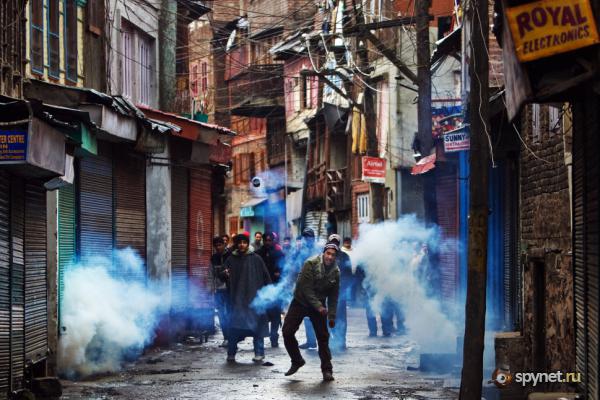
China:
Uighur woman peering through the guards, while Chinese soldiers watching the city of Urumqi, Xinjiang province, July 9, 2009. The northwestern autonomous region is home to 13 ethnic groups - the largest of which - 45% of the population - the Uighurs. Despite the fact that the area is considered to be autonomous, some representatives of the Uighurs require recognition of full independence since the mid-90s. China's attempts to unite with this area only cause ethnic tensions, conjugated with religious repression and economic inequality, and it's only worsen the situation. When the revolt broke out the next Uighurs in Urumqi, the authorities reacted immediately. As a result, 150 people were killed.
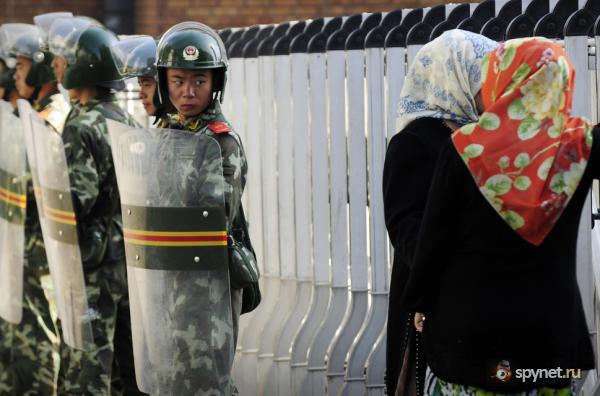
Iran:
To protest the results of presidential elections, won by Ahmadinejad in 2009, millions of Iranians took to the streets, supporting opposition candidate Mir Hossein Mousavi. According to them, it was he was supposed to win the election, but the results were falsified. This revolt was given the name "Green Revolution", it is believed that this is one of the most significant developments in Iranian politics since 1979. "Color Revolution" took place in other countries: Georgia, Ukraine and Serbia. The Iranian regime has never renounced the use of arms to disperse the protesters. The picture shows one of the rebel covers his face with his hand, which is visible symbolic green armband, December 27, 2009, after a collision with the forces of the voluntary Basij militia, reinforced joined them fighters of internal security.
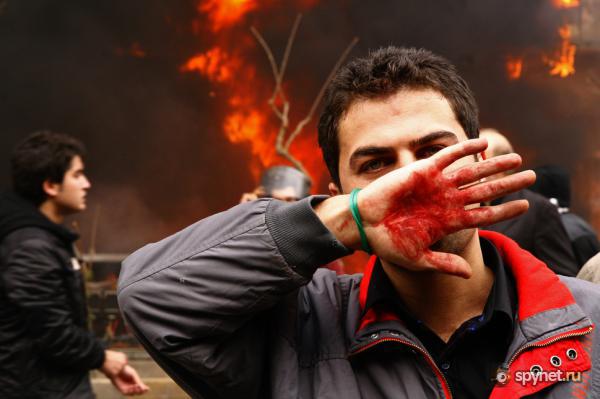
Chad:
This is the fifth year is continuing civil war, anti-government uprising supported by neighboring Sudan. Chad has become a good haven not only for the thousands of refugees from Darfur, but also for those. Those who fled from the neighboring Central African Republic. The picture shows soldiers of the Chadian rest after the collision «Battle of Am Dam», which lasted for 2 days in May 2009. As a result, the Chadian forces failed to prevent the capture of the capital N'Djamena and overthrow the government.
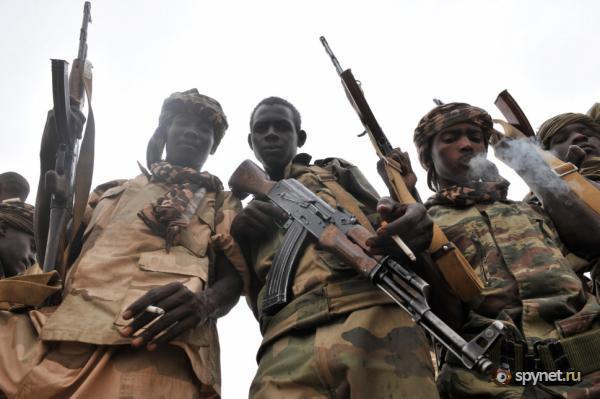
Eastern Chad:
Over the last 5 years as a result of fighting in eastern Chad and neighboring Darfur, Sudan, more than 400 000 people were forced to flee to the desert of Chad and form there to refugee camps. Rebels of the two countries alternately complain to each other. A fall in the crossfire civilians tired of senseless violence, the tactics of scorched earth and ethnic cleansing. The picture shows Sudanese women carry branches for a fire in a refugee camp, Chad, 26 June 2008.
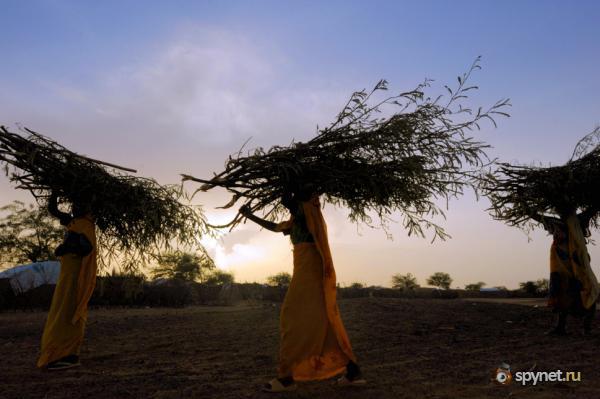
Korea:
After more than half a century after the end of the Korean War, relations between communist North Korea and democratic South Korea remain tense. So far, no peace agreement was signed between the two countries, and the United States reserves its 20,000 soldiers in the south. North Korean leader Kim Jong Il, succeeding his father, Kim Il Sung in 1994, continues to develop its nuclear program, Pyongyang, despite the fact that the US repeatedly during negotiations trying to cut her. North Korea first tested a nuclear device in 2006, the second attempt took place in May 2009. The picture shows soldiers of the North Korean army soldier stands in front of the South Korean army on the border that divides the territory into two Korea on February 19, 2009.

Pakistan North-West:
Pakistan North-West Frontier Province and the Federally Administered Tribal Areas - the two most intense hot spots in the world. On along the border with Afghanistan, in the two regions since 2001 is most fierce fighting between Islamists and the army of Pakistan. It is believed that the leaders are sheltering al-Qaida. American planes are constantly patrolling the skies over these territories in search of terrorists and Taliban leaders. The picture shows Pakistani soldiers on the background of burnt oil tankers, which was burned by the rebels on February 1 2010.
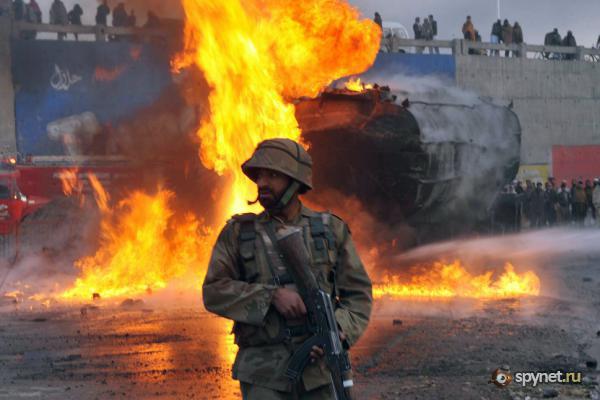
Pakistan:
While the situation in Iraq and Afghanistan, excites the whole international community, Pakistan is a key country in the fight against terrorism the Americans. Under increased pressure from the United States to Islamabad recently stepped up efforts to remove the Taliban from the borders. While Pakistani troops enjoyed some success in the fight against the Taliban, it exhibits some instability among the civilian population. In the photo taken June 21, 2009, the Pakistani refugees in the camp «Shah Mansoor», Swabi, Pakistan.

Somalia:
This country is located in the southeast of Africa, with the 1990s there without a central government, the same there is no peaceful coexistence. After the overthrow of the country's leader, Mohamed Siad Barre in January 1992, rebels have split into several rival groups, driven by various dictators. The United States intervened in the conflict in 1992, carried out the operation "Restore Hope", but in 1994 they withdrew troops from the country within a few months after the incident, "Black Hawk Down." The Government of the Islamic Courts managed to somewhat stabilize the situation in 2006, but this reign lasted very long. Fearing the spread of Islam in 2007, it was created by the Transitional Federal Government. Now most of the country is under the control of the rebels, while the Transitional Federal Government and President Sheikh Sharif Sheikh Ahmed, the former leader of the Islamic Courts controlled by only a few areas. Since 1991, they killed hundreds of thousands of civilians, and more than 1, 5 million have become refugees. Pictured Somali woman prepares food in a refugee camp near Mogadishu on 19 November 2007.
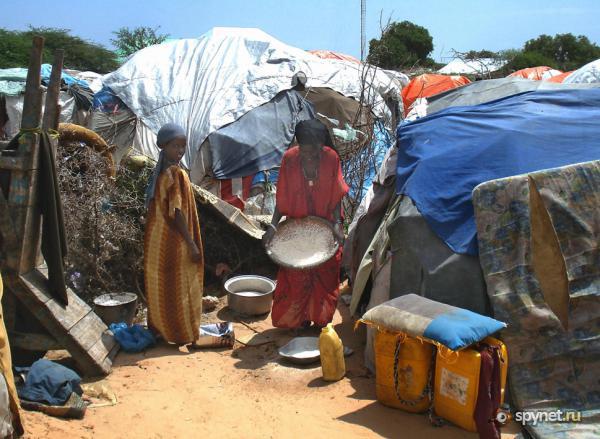
Somalia:
Somalia - a failed state, which is trying to control the number of leaders. A weak government is in Mogadishu, while a few powerful dictators controlled territory. Sharia Court provides some semblance of order, while the radical-Islamist organization, the most powerful of which is the «al-Shabab», continues to grab land. In 2009, the conflict has shrunk to the confrontation between the central government and «al-Shabab». Recently «al-Shabab» has publicly stated that subsequent international jihad movement under the control of al-Qaida. The picture shows a soldier near the body of an insurgent who was killed during the attack fighters «al-Shabab» position of the government army on 1 December 2009.
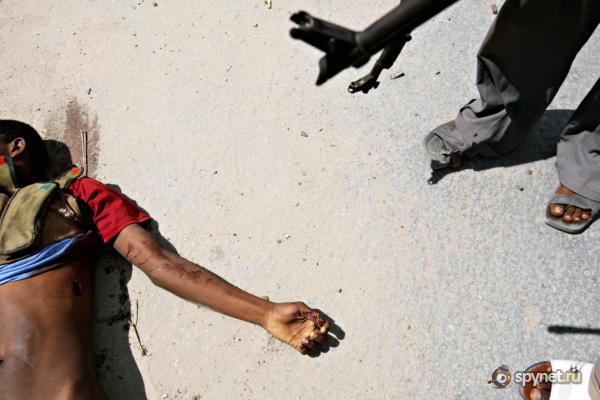
Philippines:
The Philippines is a country in the territory, which runs the length of the conflict in 40 years, which is the longest war in Asia. During this conflict, killing 40 000 people. The standoff began in 1969 after the formation of the communist rebel group called the "New People's Army." The aim of the rebels was to overthrow the regime of Ferdinand Marcos. Despite the death of Marcos in 1989, attempts by international observers to resolve the conflict have failed, including a 20-year-old attempted to Norway, which collapsed in 2004. "New People's Army" is known for its guerrilla war, and the fact that gaining the ranks of their fighters children. It is the children, according to some estimates, account for about 40% of the rebel army. The picture shows soldiers of the Philippine Army in the watchtower, Luzon, 17 October 2006.
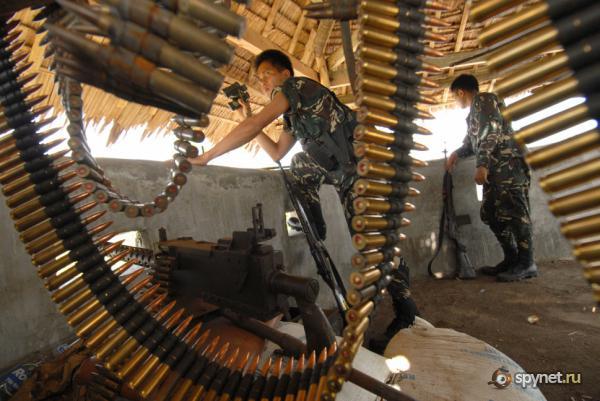
Strip:
After the parliamentary elections, which have caused a lot of disputes and bloody battles against the Palestinian Authority, Hamas took full control of the country in 2007. When Israel has tightened sanctions, Hamas and other groups said the blows makeshift rockets "Qassam" Nearby at Israeli towns. In December 2008, Israel carried out a large-scale operation to destroy Hamas's military capabilities. None of the parties did not come out of this war spotless; Hamas accused of using so-called "human shields", while Israel uses white phosphorus, which kills civilians. In the photo, a Palestinian survivors gathers items from the wreckage of his home, which was destroyed by the Israeli air attack on January 5, 2009.

India:
According to the statement of Indian Prime Minister Manmohan Singh Communist Party of India (Maoist), known as "Naxalites", "the most powerful inner strength with which ever come across our country." Despite the fact that the movement "Naxalites" was originally a small organization of peasant opposition since 1967, eventually rose to the revolutionary and national liberation movement. The purpose of this organization is to overthrow the regime of the Indian government and the Maoists. Over the past 10 years, the movement has increased its forces four times, currently active in 223 districts of the country. The picture shows supporters of the Communist Party of India opposed paid bus tours in Andhra Pradesh, Jan. 7, 2010.
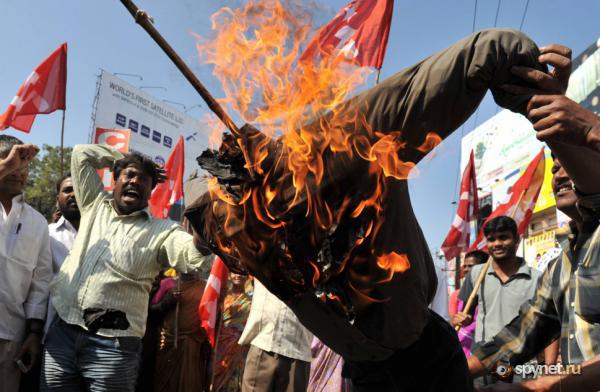
Afghanistan:
Just a few months after the terrorist attacks of September 11, 2001, US forces destroyed the Taliban forces and al-Qaeda and the regime established under President Hamid Karzaya. 8 years later, the elections did not bring stability and activities of the Taliban once again tightened. In December 2009, US President Barrack Obama has ordered 30,000 troops to join the NATO troops in Afghanistan. As a result, a contingent of peacekeeping forces in Afghanistan reached 150,000 people. The picture shows an Afghan family watching US Marines on 16 February 2010.
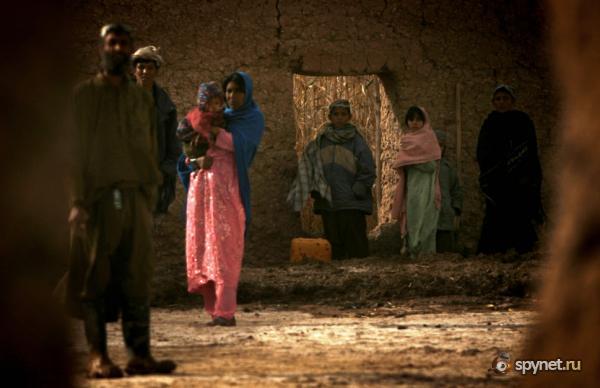
Nigeria:
Anti-government movement "Niger Delta" appeared after human rights activist Ken Saro-Wiwa and several of his colleagues were executed by the military regime of the country in 1995. Ken Saro-Wiwa spoke out against poverty, as well as pollution of the country after oil companies began their studies. Today the "Movement for the Emancipation of the Niger Delta", founded in 2003, is responsible for the country's oil wealth, as well as for the elimination of pollution. The photograph, taken in September 2008, members of the "Movement for the Emancipation of the Niger Delta," which celebrates the victory over the Nigerian government forces. January 30, 2010 "Movement for the Emancipation of the Niger Delta" violated the unilateral ceasefire, which was adopted in October. This disorder has led to the fact that people began again to be afraid of kidnappings and attacks on oil companies.
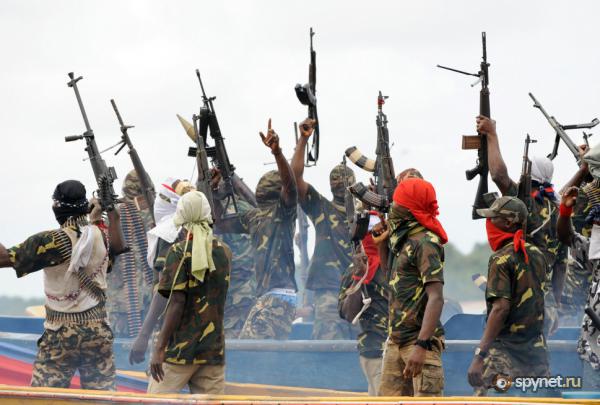
South Ossetia:
South Ossetia - a runaway Georgian province, located on the border with Russia. In 1988 he formed the South Ossetian Popular Front (Adamon Nykhas), who fought for the secession of Georgia and integration with Russia. Since military confrontation became permanent. The biggest clashes were noted in 1991, 1992 and 2004. And the last occurred in 2008, when Russian troops supported South Ossetia. It is believed that today South Ossetia is under Russian control but tension is still high. The picture shows Russian troops overcome the mountain on the way to the South-Ossetian conflict zone on August 9, 2008.
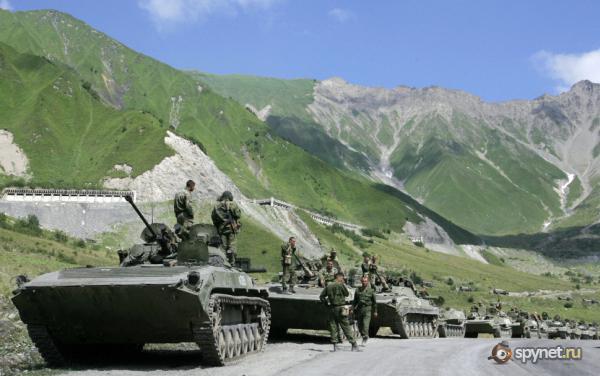
Central African Republic:
In 2004, after a decade of instability in the country's civil war broke out. The rebels, who call themselves "The Union of Democratic Forces for Unity", the first to oppose the government of President Francois Bozize, who came to power after a coup in 2003. Despite the fact that the conflict officially ended with a peace agreement Apr. 13, 2007, some cases of violence still continues. Since 2007, the European Union maintains a contingent of peacekeepers, designed to protect civilians and to help the government. The picture shows a French spokesman Michael Sampik talking to Jakub Abdel Karim, head of the village in Dahele, Central African Republic, February 12, 2009.

Burma:
Karen, an ethnic minority, since 1949, fighting with the Burmese government to recognize the autonomous district Kawthoolei, located on the border with Thailand. This confrontation is one of the most protracted internal conflicts in the world. In June 2009, the Burmese army launched an offensive against Karen rebels on the border of Thailand and Burma. They managed to destroy seven rebel camp and drive the remaining 4,000 fighters deep into the jungle. The picture shows soldiers of the National Association of Karen armed with a machine gun during the celebration of the 57th anniversary of the conflict, 31 January 2006.

Colombia:
Since 1964, Colombia is in a protracted low-intensity civil strife. In the feud involved as the authorities and paramilitary organizations, guerrillas and drug syndicates, for example, the "Revolutionary Armed Forces of Colombia" and the "National Liberation Army". During the conflict, hostage-taking, drug trafficking, terrorist attacks on the civilian population have become a familiar part of life in Colombia. The picture shows Colombian officer Narcotics holding one of the 757 bundles of dynamite have been found in Medellin November 3, 2009 in one of the caches of weapons and ammunition.
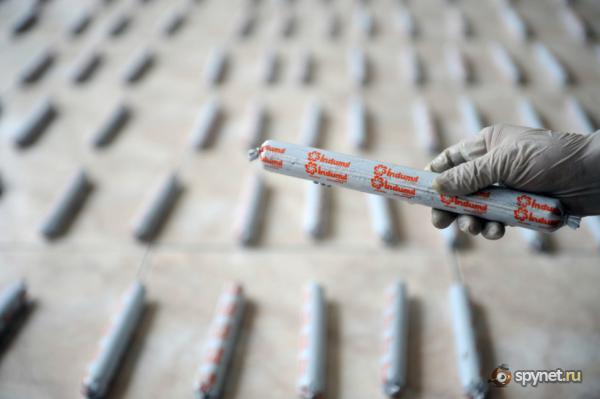
Peru:
Since 1980, the Peruvian government is trying to destroy the Maoist guerrilla organization "Shining Path". The guerrillas seek to overthrow, according to them "bourgeois" government in Lima and to establish a "dictatorship of the proletariat." Despite the fact that the "Shining Path" acted quite active in the 1980s, the arrest of Abimael Guzman's faction leader, produced by the Government in 1992 dealt a severe blow to their activities. But after a decade of silence, "Shining Path" marked his comeback by a bomb near the US embassy in Lima in March 2002, which boomed in just a few days after the visit of US President George W. Bush. The picture shows the Peruvian Interior Minister Luis Alva Castro, carefully check the condition of weapons and uniforms seized by police after clashes and militant "Shining Path" in Tingo Maria 27 November 2007.
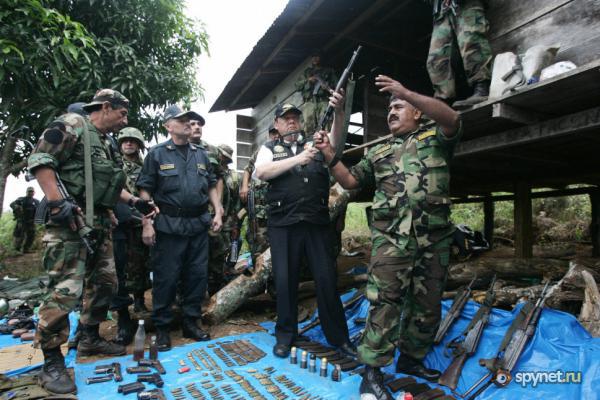
Northern Ireland:
In 1969, a secret armed wing of the party "Sinn Fein" (Ireland's oldest party founded in 1905), entitled "Provisional Irish Republican Army" launched a fierce operation to oust British troops from Northern Ireland, who hoped to unite with the rest of Ireland. The conflict escalated in 1972, when Westminster announced the direct rule in Ulster.
Nepal:
Despite the fact that the 2006 peace agreement put an end to the 10-year civil war between the Maoists and the central government of Nepal is trying to maintain a semblance of stability, although the two ruling parties are squabbling endlessly. The last outbreak of clashes seen in Kathmandu in May 2009. Then the leader of the Communist Party of Nepal (Maoist) Prachanda resigned after President Ram Baran like Yadav criticized the decision of the Prime Minister to dismiss General Rukmagada Katavala. Pictured Nepali student activist who supports the protest against the dismissal of the Nepali Congress Katavaly, May 3, 2009.

Eastern Congo:
The situation in Eastern Congo rather unstable since the national squads of Hutu militias (Interahamwe) declared war on the country's ethnic minorities - Tutsi. Since 1994, the confrontation resulted in the genocide. Since then, the region has become a haven for a large number of insurgents, the actions of which more than a million Congolese have been forced to flee the country, and several millions were killed. In 2003, the leader of the mutiny of Tutsi Laurent Nkunda continued to fight Hutu (Interahamwe) and created the "National Congress for the Defence of the People." In January 2009, Nkunda was captured by Rwandan troops. But even despite the loss of their leader, some Tutsi rebel group still commit violence. The picture shows the members of the family carry the body of their relatives for burial. The camp for rebels in Goma on 19 January 2009.

Kashmir:
Conflict continues in Kashmir since 1947, since the UK abandoned its rights in India. As a result of the collapse of the formed two countries, Pakistan and India. The conflict is associated with section of the disputed territories, and still often skirmishes on the border of these states, as well as in Kashmir, which belongs to India. For example, the excitement that erupted after the death of two unarmed Muslim teenagers. Pictured Kashmiri Muslims throw cans of tear gas back at police. It was this tear gas was used to disperse the crowd of protesters in Srinagar on 5 February 2010.

China:
Uighur woman peering through the guards, while Chinese soldiers watching the city of Urumqi, Xinjiang province, July 9, 2009. The northwestern autonomous region is home to 13 ethnic groups - the largest of which - 45% of the population - the Uighurs. Despite the fact that the area is considered to be autonomous, some representatives of the Uighurs require recognition of full independence since the mid-90s. China's attempts to unite with this area only cause ethnic tensions, conjugated with religious repression and economic inequality, and it's only worsen the situation. When the revolt broke out the next Uighurs in Urumqi, the authorities reacted immediately. As a result, 150 people were killed.

Iran:
To protest the results of presidential elections, won by Ahmadinejad in 2009, millions of Iranians took to the streets, supporting opposition candidate Mir Hossein Mousavi. According to them, it was he was supposed to win the election, but the results were falsified. This revolt was given the name "Green Revolution", it is believed that this is one of the most significant developments in Iranian politics since 1979. "Color Revolution" took place in other countries: Georgia, Ukraine and Serbia. The Iranian regime has never renounced the use of arms to disperse the protesters. The picture shows one of the rebel covers his face with his hand, which is visible symbolic green armband, December 27, 2009, after a collision with the forces of the voluntary Basij militia, reinforced joined them fighters of internal security.

Chad:
This is the fifth year is continuing civil war, anti-government uprising supported by neighboring Sudan. Chad has become a good haven not only for the thousands of refugees from Darfur, but also for those. Those who fled from the neighboring Central African Republic. The picture shows soldiers of the Chadian rest after the collision «Battle of Am Dam», which lasted for 2 days in May 2009. As a result, the Chadian forces failed to prevent the capture of the capital N'Djamena and overthrow the government.

Eastern Chad:
Over the last 5 years as a result of fighting in eastern Chad and neighboring Darfur, Sudan, more than 400 000 people were forced to flee to the desert of Chad and form there to refugee camps. Rebels of the two countries alternately complain to each other. A fall in the crossfire civilians tired of senseless violence, the tactics of scorched earth and ethnic cleansing. The picture shows Sudanese women carry branches for a fire in a refugee camp, Chad, 26 June 2008.

Korea:
After more than half a century after the end of the Korean War, relations between communist North Korea and democratic South Korea remain tense. So far, no peace agreement was signed between the two countries, and the United States reserves its 20,000 soldiers in the south. North Korean leader Kim Jong Il, succeeding his father, Kim Il Sung in 1994, continues to develop its nuclear program, Pyongyang, despite the fact that the US repeatedly during negotiations trying to cut her. North Korea first tested a nuclear device in 2006, the second attempt took place in May 2009. The picture shows soldiers of the North Korean army soldier stands in front of the South Korean army on the border that divides the territory into two Korea on February 19, 2009.

Pakistan North-West:
Pakistan North-West Frontier Province and the Federally Administered Tribal Areas - the two most intense hot spots in the world. On along the border with Afghanistan, in the two regions since 2001 is most fierce fighting between Islamists and the army of Pakistan. It is believed that the leaders are sheltering al-Qaida. American planes are constantly patrolling the skies over these territories in search of terrorists and Taliban leaders. The picture shows Pakistani soldiers on the background of burnt oil tankers, which was burned by the rebels on February 1 2010.

Pakistan:
While the situation in Iraq and Afghanistan, excites the whole international community, Pakistan is a key country in the fight against terrorism the Americans. Under increased pressure from the United States to Islamabad recently stepped up efforts to remove the Taliban from the borders. While Pakistani troops enjoyed some success in the fight against the Taliban, it exhibits some instability among the civilian population. In the photo taken June 21, 2009, the Pakistani refugees in the camp «Shah Mansoor», Swabi, Pakistan.

Somalia:
This country is located in the southeast of Africa, with the 1990s there without a central government, the same there is no peaceful coexistence. After the overthrow of the country's leader, Mohamed Siad Barre in January 1992, rebels have split into several rival groups, driven by various dictators. The United States intervened in the conflict in 1992, carried out the operation "Restore Hope", but in 1994 they withdrew troops from the country within a few months after the incident, "Black Hawk Down." The Government of the Islamic Courts managed to somewhat stabilize the situation in 2006, but this reign lasted very long. Fearing the spread of Islam in 2007, it was created by the Transitional Federal Government. Now most of the country is under the control of the rebels, while the Transitional Federal Government and President Sheikh Sharif Sheikh Ahmed, the former leader of the Islamic Courts controlled by only a few areas. Since 1991, they killed hundreds of thousands of civilians, and more than 1, 5 million have become refugees. Pictured Somali woman prepares food in a refugee camp near Mogadishu on 19 November 2007.

Somalia:
Somalia - a failed state, which is trying to control the number of leaders. A weak government is in Mogadishu, while a few powerful dictators controlled territory. Sharia Court provides some semblance of order, while the radical-Islamist organization, the most powerful of which is the «al-Shabab», continues to grab land. In 2009, the conflict has shrunk to the confrontation between the central government and «al-Shabab». Recently «al-Shabab» has publicly stated that subsequent international jihad movement under the control of al-Qaida. The picture shows a soldier near the body of an insurgent who was killed during the attack fighters «al-Shabab» position of the government army on 1 December 2009.

Philippines:
The Philippines is a country in the territory, which runs the length of the conflict in 40 years, which is the longest war in Asia. During this conflict, killing 40 000 people. The standoff began in 1969 after the formation of the communist rebel group called the "New People's Army." The aim of the rebels was to overthrow the regime of Ferdinand Marcos. Despite the death of Marcos in 1989, attempts by international observers to resolve the conflict have failed, including a 20-year-old attempted to Norway, which collapsed in 2004. "New People's Army" is known for its guerrilla war, and the fact that gaining the ranks of their fighters children. It is the children, according to some estimates, account for about 40% of the rebel army. The picture shows soldiers of the Philippine Army in the watchtower, Luzon, 17 October 2006.

Strip:
After the parliamentary elections, which have caused a lot of disputes and bloody battles against the Palestinian Authority, Hamas took full control of the country in 2007. When Israel has tightened sanctions, Hamas and other groups said the blows makeshift rockets "Qassam" Nearby at Israeli towns. In December 2008, Israel carried out a large-scale operation to destroy Hamas's military capabilities. None of the parties did not come out of this war spotless; Hamas accused of using so-called "human shields", while Israel uses white phosphorus, which kills civilians. In the photo, a Palestinian survivors gathers items from the wreckage of his home, which was destroyed by the Israeli air attack on January 5, 2009.

India:
According to the statement of Indian Prime Minister Manmohan Singh Communist Party of India (Maoist), known as "Naxalites", "the most powerful inner strength with which ever come across our country." Despite the fact that the movement "Naxalites" was originally a small organization of peasant opposition since 1967, eventually rose to the revolutionary and national liberation movement. The purpose of this organization is to overthrow the regime of the Indian government and the Maoists. Over the past 10 years, the movement has increased its forces four times, currently active in 223 districts of the country. The picture shows supporters of the Communist Party of India opposed paid bus tours in Andhra Pradesh, Jan. 7, 2010.

Afghanistan:
Just a few months after the terrorist attacks of September 11, 2001, US forces destroyed the Taliban forces and al-Qaeda and the regime established under President Hamid Karzaya. 8 years later, the elections did not bring stability and activities of the Taliban once again tightened. In December 2009, US President Barrack Obama has ordered 30,000 troops to join the NATO troops in Afghanistan. As a result, a contingent of peacekeeping forces in Afghanistan reached 150,000 people. The picture shows an Afghan family watching US Marines on 16 February 2010.

Nigeria:
Anti-government movement "Niger Delta" appeared after human rights activist Ken Saro-Wiwa and several of his colleagues were executed by the military regime of the country in 1995. Ken Saro-Wiwa spoke out against poverty, as well as pollution of the country after oil companies began their studies. Today the "Movement for the Emancipation of the Niger Delta", founded in 2003, is responsible for the country's oil wealth, as well as for the elimination of pollution. The photograph, taken in September 2008, members of the "Movement for the Emancipation of the Niger Delta," which celebrates the victory over the Nigerian government forces. January 30, 2010 "Movement for the Emancipation of the Niger Delta" violated the unilateral ceasefire, which was adopted in October. This disorder has led to the fact that people began again to be afraid of kidnappings and attacks on oil companies.

South Ossetia:
South Ossetia - a runaway Georgian province, located on the border with Russia. In 1988 he formed the South Ossetian Popular Front (Adamon Nykhas), who fought for the secession of Georgia and integration with Russia. Since military confrontation became permanent. The biggest clashes were noted in 1991, 1992 and 2004. And the last occurred in 2008, when Russian troops supported South Ossetia. It is believed that today South Ossetia is under Russian control but tension is still high. The picture shows Russian troops overcome the mountain on the way to the South-Ossetian conflict zone on August 9, 2008.

Central African Republic:
In 2004, after a decade of instability in the country's civil war broke out. The rebels, who call themselves "The Union of Democratic Forces for Unity", the first to oppose the government of President Francois Bozize, who came to power after a coup in 2003. Despite the fact that the conflict officially ended with a peace agreement Apr. 13, 2007, some cases of violence still continues. Since 2007, the European Union maintains a contingent of peacekeepers, designed to protect civilians and to help the government. The picture shows a French spokesman Michael Sampik talking to Jakub Abdel Karim, head of the village in Dahele, Central African Republic, February 12, 2009.

Burma:
Karen, an ethnic minority, since 1949, fighting with the Burmese government to recognize the autonomous district Kawthoolei, located on the border with Thailand. This confrontation is one of the most protracted internal conflicts in the world. In June 2009, the Burmese army launched an offensive against Karen rebels on the border of Thailand and Burma. They managed to destroy seven rebel camp and drive the remaining 4,000 fighters deep into the jungle. The picture shows soldiers of the National Association of Karen armed with a machine gun during the celebration of the 57th anniversary of the conflict, 31 January 2006.

Colombia:
Since 1964, Colombia is in a protracted low-intensity civil strife. In the feud involved as the authorities and paramilitary organizations, guerrillas and drug syndicates, for example, the "Revolutionary Armed Forces of Colombia" and the "National Liberation Army". During the conflict, hostage-taking, drug trafficking, terrorist attacks on the civilian population have become a familiar part of life in Colombia. The picture shows Colombian officer Narcotics holding one of the 757 bundles of dynamite have been found in Medellin November 3, 2009 in one of the caches of weapons and ammunition.

Peru:
Since 1980, the Peruvian government is trying to destroy the Maoist guerrilla organization "Shining Path". The guerrillas seek to overthrow, according to them "bourgeois" government in Lima and to establish a "dictatorship of the proletariat." Despite the fact that the "Shining Path" acted quite active in the 1980s, the arrest of Abimael Guzman's faction leader, produced by the Government in 1992 dealt a severe blow to their activities. But after a decade of silence, "Shining Path" marked his comeback by a bomb near the US embassy in Lima in March 2002, which boomed in just a few days after the visit of US President George W. Bush. The picture shows the Peruvian Interior Minister Luis Alva Castro, carefully check the condition of weapons and uniforms seized by police after clashes and militant "Shining Path" in Tingo Maria 27 November 2007.

Northern Ireland:
In 1969, a secret armed wing of the party "Sinn Fein" (Ireland's oldest party founded in 1905), entitled "Provisional Irish Republican Army" launched a fierce operation to oust British troops from Northern Ireland, who hoped to unite with the rest of Ireland. The conflict escalated in 1972, when Westminster announced the direct rule in Ulster.






